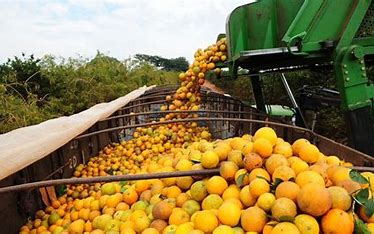Specialist says that U.S. industry will have to import fruits very soon
11/23/2022

The moment when the U.S. orange juice industry will operate only with imported fruit is near. In 21 years, the production in the state of Florida, which concentrates the largest citrus grove in the country, fell to 28 million from 230 million boxes, according to the U.S. Department of Agriculture (USDA). With the damage caused by the hurricane Ian, the volume may shrink to about 14 million boxes.
“To run a juice plant you need to have a good volume of fruit, otherwise the cost per tonne gets too high. So, the discussion at this moment is whether it is viable to continue producing oranges or import 100% of the raw material”, said Andrés Padilla, industry specialist of Rabobank Brazil to Valor. In his opinion, the situation is irreversible. “When you think that production has already fallen almost 90%, the chance of going to zero is great.”
Mr. Padilla affirms that U.S. farmers made a mistake in their strategy to combat citrus greening, a phytosanitary problem. Unlike Brazilian producers of the citrus belt that spreads over São Paulo and Minas Gerais, who uprooted the infected trees and planted new ones, the U.S. citrus producers tried to control it. “Today, all the plantations in Florida have the disease”, he commented.
In addition to the hurricanes and the greening, Florida’s production has suffered due to the rising cost of land and labor. “Of the four big plants that are left, one or two at the most will run at the next harvest. It’s not worth opening shifts because the losses are for sure,” said the analyst.
The drop in the supply of oranges in the U.S. will open space for a greater volume of exports from Brazil, whose production is recovering after two years of problems caused by La Niña. According to the Rabobank specialist, the country is likely to reach 314 million boxes, a 20% increase. But he considers that, in the short term, the low Brazilian stocks of the beverage will limit the increase in shipments.
But the juice demand of today, and the future, is a big question mark in the U.S. and in the world. According to Mr. Padilla, consumption has declined dramatically over the past decade. From the 2016/2017 harvest to the current cycle of 2022/23 the projection is for a 13% global retreat, to 1.56 million tonnes of the beverage equivalent to concentrated and frozen product (FCOJ).
“Not so long ago, a negative image of the product was created – due to the calories – from data that were not the most correct from the scientific point of view. Several nutritionists started to tell people to opt for the consumption of the fruit in natura”, he explained.
To the Rabobank expert, the industry – including the Brazilian industry – also failed to advance in emerging markets, such as China: “The Chinese demand grew a little, but not enough to counteract the fall in consumption in Europe, the biggest import market.”
In the medium term, the orange high may sustain the orange juice contracts in the New York Stock Exchange. However, at a time of global economic recession, the high price may accelerate the reduction in consumption.
*By José Florentino — São Paulo
Source: Valor International
